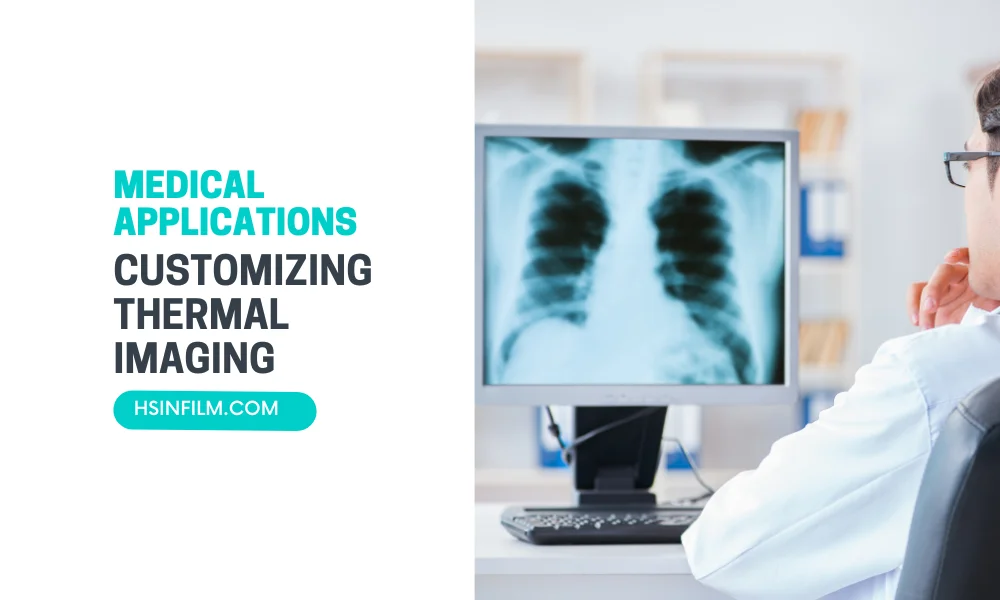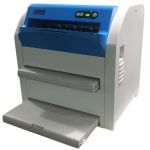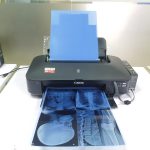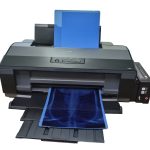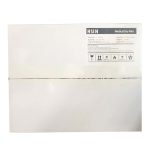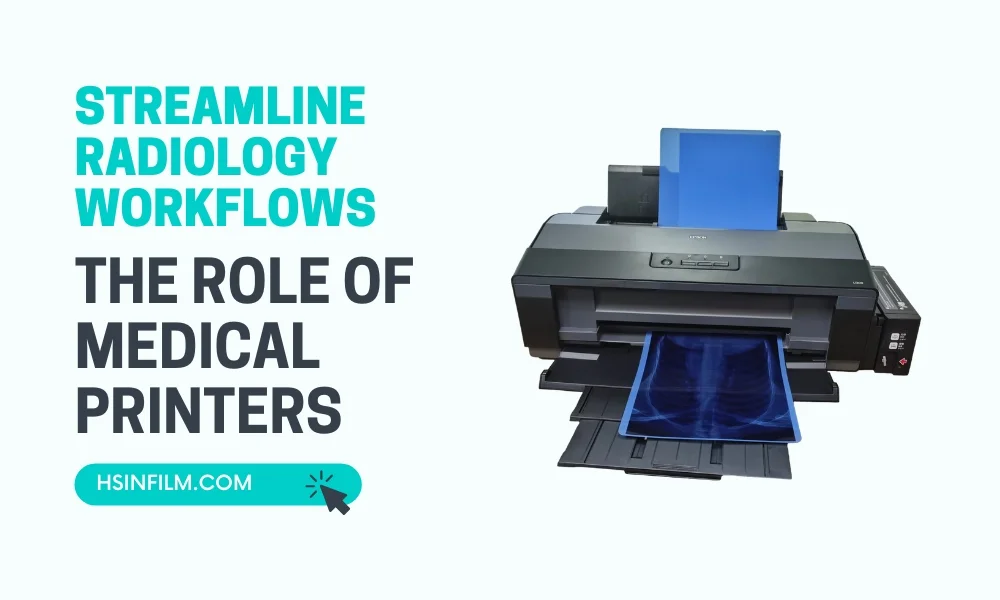Thermal imaging has emerged as a powerful tool in the medical field, providing unique insights into various health conditions. This technology captures and visualizes the heat emitted by the body, offering a non-invasive way to detect and monitor diseases. In this blog post, we will explore how thermal imaging can be customized for specialized medical applications, enhancing its effectiveness and expanding its use in healthcare.
Table of Contents
What Is Thermal Imaging?
Introduction to Thermal Imaging
Thermal imaging, also known as infrared thermography, involves capturing and analyzing the heat emitted from objects and bodies. Unlike traditional imaging techniques that rely on visible light, thermal imaging uses infrared radiation to detect temperature variations. In the medical field, this technology helps visualize physiological functions and identify abnormalities.
Importance in Healthcare
Thermal imaging is invaluable in medical diagnostics and monitoring, providing real-time, non-contact assessments of patients. It helps detect conditions such as inflammation, infections, and vascular problems, contributing to more accurate and timely medical interventions.
Benefits of Customizing Thermal Imaging
Enhanced Diagnostic Accuracy
Customizing thermal imaging for specific medical applications improves diagnostic accuracy. By tailoring the technology to focus on particular areas or conditions, healthcare providers can obtain more precise data, leading to better diagnosis and treatment plans.
Improved Patient Comfort
Thermal imaging is non-invasive and painless, making it a comfortable option for patients. Customization ensures that the technology is used effectively for different patient needs, enhancing overall patient experience and care.
Broader Application Range
Customized thermal imaging can be adapted for various medical specialties, from oncology to orthopedics. This versatility allows for a wider range of applications, making it a valuable tool in comprehensive healthcare.
Key Components of Customizing Thermal Imaging
Choosing the Right Sensor
Types of Sensors
- Uncooled Microbolometers: These sensors are commonly used in medical thermal imaging due to their affordability and reliability. They do not require cooling, making them ideal for portable devices.
- Cooled Photon Detectors: These sensors provide higher sensitivity and resolution, making them suitable for detailed medical imaging, such as in detecting small temperature variations.
Factors to Consider
When selecting a sensor, consider factors such as sensitivity, resolution, and the specific medical application. High-sensitivity sensors are essential for detecting minute temperature changes in the body, which is crucial for early disease detection.
Calibration for Accuracy
Importance of Calibration
Calibration ensures that the thermal imaging device provides accurate temperature readings. It involves adjusting the device to account for factors such as ambient temperature and humidity, which can affect the accuracy of the measurements.
Regular Maintenance
Regular calibration and maintenance of thermal imaging devices are necessary to maintain their accuracy and reliability. This includes checking the sensors and software to ensure consistent performance.
Software Customization
Specialized Software Features
Custom software can enhance the functionality of thermal imaging devices. Features such as automatic anomaly detection, real-time temperature mapping, and customizable reporting can improve the efficiency and accuracy of medical diagnostics.
User-Friendly Interface
A user-friendly interface is crucial for healthcare providers to easily operate and interpret thermal imaging data. Customizing the software to include intuitive controls and clear visualizations ensures that medical professionals can effectively use the technology.
Integration with Other Medical Systems
Seamless Data Integration
Integrating thermal imaging data with other medical systems, such as electronic health records (EHRs) and diagnostic tools, enhances the overall diagnostic process. This allows for comprehensive patient assessments and streamlined workflows.
Connectivity Options
Customizing thermal imaging devices to include various connectivity options, such as Wi-Fi and Bluetooth, facilitates the easy sharing of data with other medical devices and systems, promoting collaboration and efficiency in patient care.
You can check our thermal film and printer
Specialized Applications of Thermal Imaging in Medicine

Oncology
Early Cancer Detection
Thermal imaging can detect temperature differences associated with cancerous tumors, aiding in early diagnosis. Customizing the imaging system to focus on specific body areas and optimize resolution can enhance the detection of small tumors.
Monitoring Treatment Progress
Thermal imaging helps monitor changes in tumor size and response to treatment. Customized imaging settings can provide detailed thermal maps, allowing for precise tracking of treatment efficacy.
Rheumatology
Detecting Inflammation
Inflammatory conditions, such as arthritis, cause localized temperature increases that can be detected through thermal imaging. Customized thermal imaging settings can improve the detection and monitoring of inflammation in joints and tissues.
Assessing Treatment Response
Thermal imaging allows for the assessment of treatment response in inflammatory conditions. By customizing the imaging parameters, healthcare providers can track changes in inflammation and adjust treatment plans accordingly.
Vascular Health
Identifying Circulatory Problems
Thermal imaging can detect abnormalities in blood flow, such as blockages or reduced circulation, by visualizing temperature variations. Customized imaging settings can enhance the detection of vascular issues, aiding in early intervention.
Monitoring Wound Healing
Thermal imaging helps monitor the healing process of wounds by detecting changes in temperature and blood flow. Customizing the imaging system to focus on wound areas and track temperature changes can improve wound management and care.
Dermatology
Diagnosing Skin Conditions
Thermal imaging can detect temperature differences associated with various skin conditions, such as infections, inflammations, and tumors. Customized imaging settings can enhance the visualization of temperature changes, aiding in accurate diagnosis.
Assessing Treatment Efficacy
Thermal imaging helps monitor the effectiveness of treatments for skin conditions by visualizing changes in temperature and inflammation. Customizing the imaging system for specific conditions ensures precise tracking of treatment outcomes.
Tips for Implementing Customized Thermal Imaging
Assessing Medical Needs
Identifying Specific Applications
Before implementing thermal imaging, assess the specific medical needs and applications within your practice. Determine the conditions you intend to diagnose and monitor and customize the imaging system accordingly.
Evaluating Patient Demands
Consider the needs and comfort of your patients when customizing thermal imaging systems. Ensure that the technology is non-invasive, easy to use, and provides accurate results to meet patient expectations.
Investing in Training
Training Healthcare Professionals
Invest in training programs for healthcare professionals to ensure they understand how to use and interpret thermal imaging data effectively. Proper training is essential for maximizing the benefits of customized thermal imaging.
Ongoing Education
Stay updated on the latest advancements in thermal imaging technology and its applications in healthcare. Continuous education helps healthcare providers keep pace with emerging trends and improve their diagnostic capabilities.
Ensuring Regulatory Compliance
Adhering to Standards
Ensure that your customized thermal imaging system complies with regulatory standards and guidelines. Adherence to these standards is crucial for maintaining the quality and safety of medical diagnostics.
Regular Audits
Conduct regular audits and assessments of your thermal imaging system to ensure ongoing compliance with regulatory requirements. This helps maintain the integrity and reliability of your diagnostic tools.
Conclusion
Customizing thermal imaging for specialized medical applications offers significant benefits in healthcare. From enhancing diagnostic accuracy to improving patient comfort, tailored thermal imaging systems provide valuable insights into various health conditions. By understanding the key components of thermal imaging and implementing best practices, healthcare providers can effectively utilize this technology to improve patient care and outcomes. As advancements in thermal imaging continue, its role in medical diagnostics is set to expand, offering new possibilities for early detection and effective treatment of diseases.
Embrace the potential of customized thermal imaging to revolutionize your healthcare practice and provide better care for your patients.
